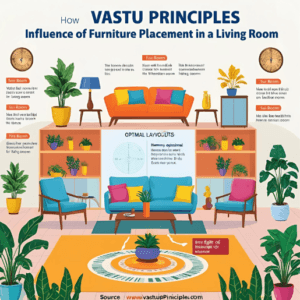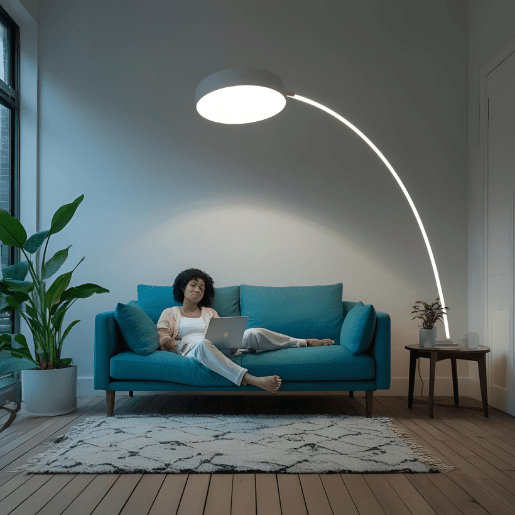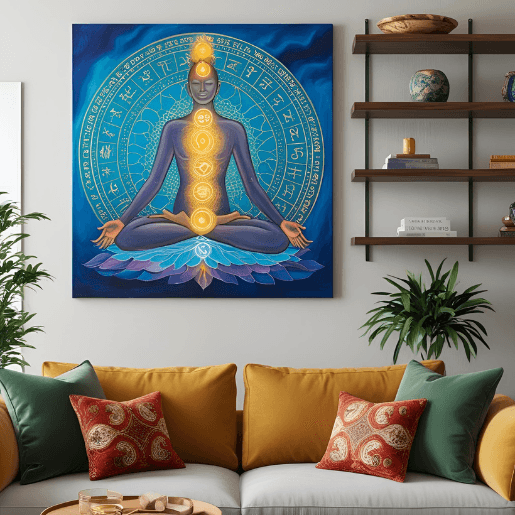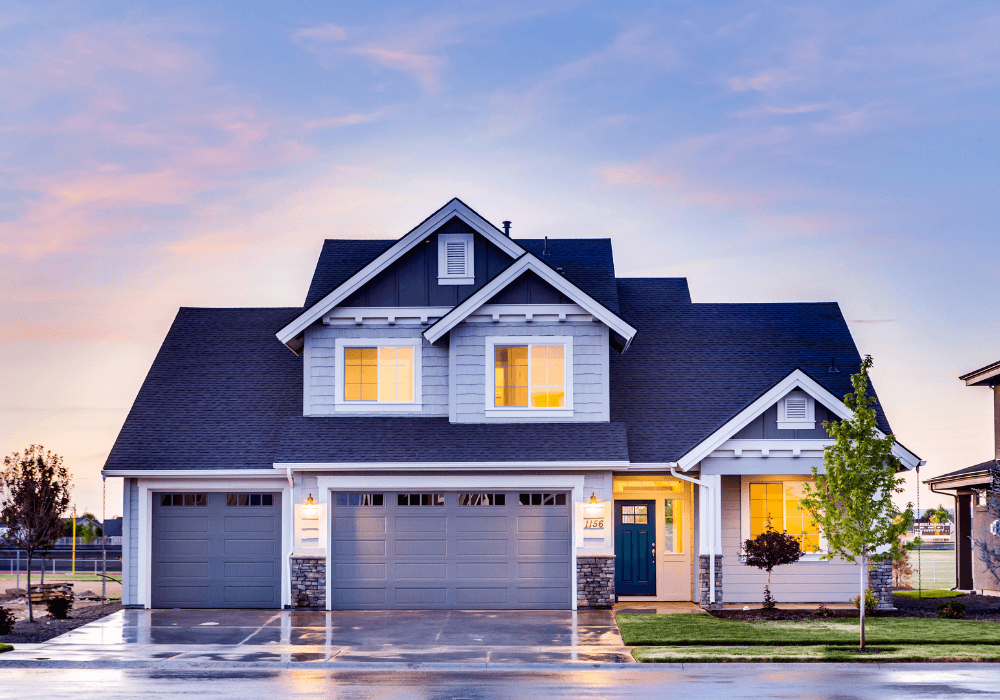Simple Vastu Shastra Tips for a Peaceful and Happy Home
Vastu Shastra, an ancient Indian architectural science, focuses on creating harmonious living spaces by aligning them with natural energies. In modern times, integrating Vastu Shastra tips into homes and workplaces can significantly enhance well-being, mental peace, and productivity. A properly aligned space not only fosters positive energy but also helps reduce stress, improve health, and boost motivation. This blog explores how Vastu influences mood, energy levels, and overall well-being in today’s fast-paced world and provides practical Vastu Shastra tips to create a balanced and peaceful living environment.
What is Vastu Shastra?
Vastu Shastra is an ancient Indian architectural science that focuses on designing spaces in harmony with natural energies. It aims to balance the five elements—earth, water, fire, air, and space—to create a positive and healthy environment. By following Vastu Shastra tips, individuals can enhance their well-being, attract prosperity, and maintain peace in their surroundings.
The Psychology Behind How Vastu Affects Our Well-being

Vastu Shastra’s influence on well-being is deeply connected to psychological principles related to spatial awareness, environmental psychology, and emotional responses to surroundings. The design of a space, its lighting, colors, and arrangement, all contribute to how we feel and behave within it. Research in environmental psychology suggests that cluttered, poorly lit, and unbalanced spaces can increase stress levels, while organized, well-lit, and harmoniously designed areas enhance relaxation and mental clarity.
Vastu aligns with these psychological insights by promoting balance, symmetry, and a natural flow of energy. The presence of open spaces and natural elements such as sunlight, fresh air, and greenery can positively impact mood and mental health. Directional positioning, an essential part of Vastu, taps into subconscious associations we have with movement, security, and openness. When a home is structured in a way that feels stable and welcoming, it fosters a sense of peace, productivity, and emotional stability.
The Role of Vastu in Well-being

1. Balancing Energy Flow
A well-balanced house, according to Vastu Shastra tips, ensures the smooth flow of energy, promoting mental and physical well-being. To achieve this balance, start with a well-planned layout that follows Vastu principles. The main entrance should ideally face north, east, or northeast to allow positive energy to enter the home.
Keeping the center of the house, known as the Brahmasthan, free from obstructions helps in maintaining harmony and free circulation of energy. Placing heavy furniture in the southwest direction provides stability, while keeping lighter, open areas in the north and east promotes a sense of expansion and positivity.
Additionally, using indoor plants, water elements like fountains, and ample natural light can further enhance the balance of energies, making the house a peaceful and inviting space. Proper placement of mirrors, avoiding clutter, and ensuring good ventilation are other essential steps to align the house with Vastu Shastra tips for a harmonious and stress-free living environment.
Vastu Shastra emphasizes the proper arrangement of elements to allow positive energy (prana) to flow freely throughout the home. Cluttered, poorly ventilated, or misaligned spaces can cause mental fatigue, stress, and emotional instability. On the other hand, an open and well-organized space allows for the smooth circulation of positive energy, which promotes clarity of thought, relaxation, and emotional stability. According to Vastu Shastra tips, ensuring a clutter-free and well-lit space is one of the fundamental steps toward achieving mental and emotional harmony.
2. Directional Impact on Mood
Vastu Shastra emphasizes that the direction in which different rooms and objects are placed can significantly influence our mood, thoughts, and emotional well-being. Each direction is associated with a specific type of energy, and aligning rooms according to Vastu principles can help create a harmonious and balanced living space.
- North-East: This direction is linked to spirituality, peace, and mental clarity. It is considered ideal for prayer rooms, meditation spaces, and study areas. Keeping this area open and uncluttered enhances intuition, wisdom, and calmness. A well-lit and ventilated north-east corner helps in reducing anxiety and mental restlessness.
- South-West: Known for stability and grounding energy, this direction is best suited for bedrooms and master bedrooms. Sleeping with the head towards the south or west enhances restful sleep, reduces stress, and provides emotional security. Heavy furniture should also be placed in this direction to ensure stability in personal and professional life.
- East: The east direction is associated with health, new opportunities, and positivity. The morning sun’s rays from this direction bring vitality and fresh energy. It is the best placement for main entrances, dining rooms, and workspaces, as it promotes growth, good health, and a positive mindset.
- West: This direction is connected with financial prosperity and professional success. Offices, study rooms, or business-related workspaces should be placed in this direction to support productivity and progress. It is also beneficial for storage areas, as it helps in accumulating wealth and stability.
- North: The north direction is associated with career growth and financial stability. It is ideal for offices, cash lockers, and workstations. Keeping this direction clutter-free and ensuring that it receives natural light can enhance business and career prospects.
- South: The south direction represents strength, fame, and power. Placing seating arrangements for senior members of the house or offices in this direction can instill confidence and authority. However, excessive exposure to this direction can lead to aggression and restlessness, so it should be balanced with cool colors and natural elements.
- South-East: This direction is ruled by the fire element and is best suited for the kitchen and cooking areas. Placing a kitchen in this direction enhances digestion, energy levels, and overall well-being. However, ensuring proper ventilation and controlled fire elements is crucial for maintaining a peaceful environment.
- North-West: This direction governs communication and relationships. Guest rooms, living rooms, and socializing areas should be placed here to foster strong personal and professional connections. It also influences decision-making and networking abilities, making it ideal for business discussions.
Aligning furniture, windows, and essential rooms according to these Vastu Shastra tips can have a profound impact on mood, emotional balance, and overall mental well-being. A well-designed home based on Vastu principles ensures that each direction enhances the desired aspect of life, promoting harmony and positivity.
3. Colours and Their Psychological Effects

The choice of colours in a living space plays an essential role in influencing emotions and energy levels. According to Vastu Shastra tips, the following colours should be incorporated strategically:
- Blue & Green: These colours have a calming effect and promote relaxation, peace, and balance. Ideal for bedrooms and meditation rooms.
- Yellow & Orange: These vibrant shades boost creativity, enthusiasm, and positive thinking. Perfect for living rooms and study spaces.
- White & Pastels: These shades bring serenity, purity, and clarity, making them excellent choices for walls and ceilings.
- Dark Colours: Should be used sparingly, as they can create a sense of heaviness, sadness, or negativity.
Proper use of colours, combined with good Vastu Shastra tips, can create a home environment that enhances mental well-being and happiness.
4. The Influence of Furniture Placement
Furniture placement plays a crucial role in maintaining energy balance and well-being in any living space. According to Vastu Shastra tips, furniture should be arranged to allow free movement and uninterrupted energy flow. Heavy furniture like sofas, wardrobes, and beds should be placed in the south-west direction to enhance stability and security, while workstations and study tables should be positioned facing east or north for better concentration and productivity.

Placing seating arrangements in the north or east direction is ideal for fostering communication and positive interactions among family members. Keeping the center of the house open and uncluttered ensures that energy flows freely, preventing stagnation and negativity. Dining tables should ideally be placed in the west or north-west direction, which is believed to enhance bonding and healthy eating habits.
Additionally, avoiding sharp-edged furniture and opting for rounded, smooth designs can help maintain harmonious energy flow, reducing stress and promoting a sense of calm in the home. Mirrors should not face the bed directly, as per Vastu principles, as it can disrupt sleep and create restlessness. Instead, mirrors can be placed in the north or east to reflect positive energy and enhance brightness in the room.
The choice of materials for furniture also impacts Vastu balance. Wooden furniture, especially from natural sources like teak or rosewood, is preferred over metal furniture, as it is believed to provide warmth and grounding energy. Avoid placing electronic appliances near sleeping or relaxation areas, as they can interfere with energy flow and disrupt peace of mind.
By following these Vastu Shastra tips, homeowners can ensure a balanced, peaceful, and vibrant living environment that supports emotional well-being, positive interactions, and overall prosperity.
5. Role of Natural Elements
Incorporating natural elements such as wood, stone, water, and plants into home décor enhances the overall Vastu balance and creates a nurturing environment that promotes mental, emotional, and physical well-being. According to Vastu Shastra tips, natural materials are believed to align with the five elements—earth, water, fire, air, and space—bringing stability, peace, and harmony into the home.
Water Features: Placing fountains, aquariums, or water bowls in the north-east direction is said to attract peace, prosperity, and positive energy. Flowing water represents movement and renewal, helping to keep energy fresh and uplifting. However, stagnant or dirty water should be avoided as it may lead to negativity and sluggishness.
Wooden Elements: Wooden furniture, doors, and decorative pieces add warmth and grounding energy to a space. According to Vastu Shastra tips, using high-quality wooden furniture, especially in the south and west directions, enhances stability, strength, and a sense of belonging.
Plants and Greenery: Keeping fresh flowers, money plants, or Tulsi (holy basil) indoors is believed to purify the air, reduce stress, and invite prosperity. Placing plants in the east or north direction can boost growth, positivity, and emotional well-being. However, thorny plants like cacti should be avoided indoors as they are thought to create tension and negativity.
Earthenware and Natural Fibers: Using clay pots, ceramic décor, and jute or cotton furnishings helps reinforce stability and tranquillity within the home. Earthy materials like terracotta tiles and stone flooring provide a strong grounding effect, promoting calmness and balance.
By incorporating these Vastu Shastra tips, one can create a harmonious and vibrant living space, fostering a deep connection with nature while enhancing mental clarity, emotional stability, and overall well-being.
6. Impact of Lighting on Mental Health

Lighting plays a crucial role in shaping our mood, productivity, and overall well-being. According to Vastu Shastra tips, proper lighting arrangements can create a positive environment that enhances mental clarity, emotional balance, and relaxation. Natural light is considered the purest and most beneficial form of illumination, as it helps regulate circadian rhythms, boost serotonin levels, and reduce stress. Homes should be designed with large windows, open spaces, and light-reflecting surfaces to allow maximum sunlight penetration, especially in the east and north directions, where sunlight is believed to have the most beneficial effects.
Artificial lighting should be used strategically to maintain a harmonious balance between brightness and warmth. Soft, warm-toned lighting in bedrooms and relaxation areas promotes a sense of calm and comfort, while bright, white lighting in workspaces, study rooms, and kitchens enhances focus, efficiency, and alertness. Dimmers and layered lighting can be incorporated to create a flexible ambiance, allowing different levels of brightness for various activities.
Placement of light sources is equally important. Avoid harsh overhead lights in sleeping areas, as they can cause mental fatigue and restlessness. Instead, bedside lamps or indirect lighting should be used to create a soothing atmosphere. In workspaces, task lighting should be positioned to reduce glare and shadows, ensuring a comfortable and productive environment.
Another essential Vastu principle related to lighting is the use of auspicious light sources, such as oil lamps, candles, or Himalayan salt lamps, particularly in prayer rooms and meditation spaces. These natural light sources help clear negative energy and enhance spiritual well-being. Additionally, using mirrors strategically placed to reflect light can amplify natural brightness and create a more vibrant and expansive feel in the home.
By implementing these Vastu Shastra tips for lighting, individuals can create a well-balanced and harmonious living environment that supports mental wellness, positivity, and overall happiness.
7. Importance of Open Spaces
Having open spaces within a home contributes to a sense of freedom, relaxation, and mental clarity. Cluttered or overcrowded spaces can create stress and anxiety, whereas open areas provide a sense of balance and movement. According to Vastu Shastra tips, maintaining a spacious living room and well-ventilated areas ensures a peaceful and rejuvenating home environment. Large windows, open courtyards, or even simple decluttering techniques can significantly improve the flow of positive energy, helping inhabitants feel light, refreshed, and mentally at ease.
8. Effects of Wall Décor and Symbols

Wall décor, including paintings, spiritual symbols, and artwork, can influence emotions and energy flow. Positive images, such as nature scenes, calming landscapes, or religious symbols, promote a sense of serenity and inspiration. Avoiding negative imagery or abstract art that evokes confusion is one of the Vastu Shastra tips for maintaining harmony in the home. Additionally, placing mirrors in the right direction, such as in the north or east wall, can enhance light reflection and positive energy flow, making spaces appear larger and more vibrant. Choosing auspicious symbols, such as Swastika, Om, or Buddha figurines, can further enhance spiritual well-being and a sense of tranquillity.
9. The Significance of Flooring and Grounding Energy
The flooring of a home plays a crucial role in maintaining stability, grounding, and energy flow. According to Vastu Shastra tips, the type of flooring material used in different areas of the house influences emotional balance and overall well-being. Natural flooring materials such as marble, granite, wood, and stone are highly recommended as they help maintain a connection with nature, creating a calming and grounding effect. Avoid using broken, cracked, or uneven tiles, as they disrupt energy flow and can lead to instability, restlessness, and financial difficulties.
A well-balanced floor plan also contributes to smooth energy circulation. The Brahmasthan, or the central area of the house, should ideally be kept open and clutter-free, allowing energy to flow freely. Placing heavy furniture in the southwest direction provides grounding stability, whereas keeping lighter flooring materials in the northeast and east enhances mental clarity and positivity.
Another important aspect of flooring in Vastu is temperature regulation. Floors that retain excessive heat, such as black tiles or dark marble, may lead to irritability and discomfort, while cool-toned flooring materials help maintain peace and emotional stability. Additionally, using mats, rugs, or carpets made of natural fibers in living spaces can further enhance grounding energy, offering a sense of warmth, security, and harmony.
Proper flooring maintenance is equally important. Regular cleaning and repairs help eliminate stagnant energy and keep the home vibrant, fresh, and full of positive vibrations. By following these Vastu Shastra tips, homeowners can create a strong foundation for balance, tranquillity, and prosperity in their living environment.
The type of flooring in a home impacts the energy balance and stability of the occupants. According to Vastu Shastra tips, natural materials such as marble, wood, or stone help maintain a grounded and calming environment. Avoiding excessively dark or broken tiles ensures smooth energy flow, preventing disruptions in mental peace. Proper flooring selection can enhance comfort, security, and overall well-being.
10. The Power of Aroma and Sound in Vastu
Aromas and sounds influence the subconscious mind and emotional state. Using natural scents like sandalwood, lavender, or camphor can create a soothing and uplifting atmosphere. Similarly, wind chimes, bells, or soft instrumental music help break stagnant energy and promote a sense of peace. According to Vastu Shastra tips, placing aromatic elements and sound-producing items in appropriate directions can elevate positivity and harmony in the home.
Vastu Shastra is an ancient Indian science of architecture and spatial arrangement that focuses on balancing the five natural elements—earth, water, fire, air, and space—to create harmonious living environments. Rooted in the belief that the physical surroundings impact mental, emotional, and spiritual well-being, Vastu provides guidelines for designing homes, offices, and public spaces to maximise the flow of positive energy. These principles have been practiced for centuries and continue to influence modern architecture and interior design. By applying Vastu Shastra tips, individuals can create spaces that promote health, happiness, and prosperity.
Incorporating Vastu Shastra tips into modern living enhances mental peace, emotional well-being, and productivity. Simple adjustments like directional alignment, decluttering, proper color choices, and natural elements can make a significant difference in one’s overall happiness and energy levels.
By embracing Vastu principles, we can create harmonious spaces that nourish the mind, body, and soul, leading to a healthier and more balanced life. Transform your home with Vastu and experience the power of positive energy!

